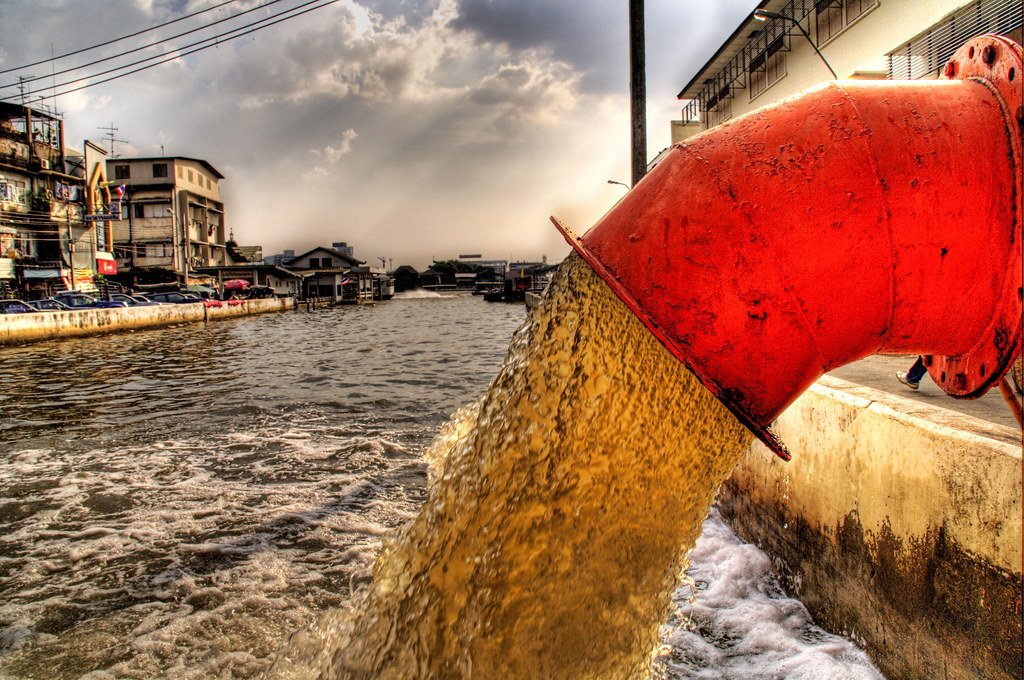
Western Mass. cities working to prevent sewer overflows amid funding challenges and intensifying rain
REPORTS OF TOILET PAPER, raw sewage, and other discarded items flowing through the Connecticut River in Suffield and Enfield went viral in recent weeks as Connecticut State Rep. Tami Zawistowski pointed the finger at Holyoke, Springfield, and Chicopee.
“They all have issues that have emerged in recent years,” Zawistowski told WTNH News 8, claiming Holyoke alone “dumped” seven million gallons of sewage into the river in one day. “It’s time for Massachusetts to step up.”
Officials in the cities that have been singled out say the “issues” that have emerged are intensifying rain events due to climate change.
The pollution in the Connecticut River is caused by combined sewer overflows (CSOs) that have long been an issue in older cities with aged infrastructure.
Cities like Holyoke, Springfield, and Chicopee have historically combined sewer systems where both wastewater and stormwater come through shared pipes. During heavy rains, the excess flow bypasses the treatment plants where it is supposed to be cleaned and is instead discharged into local bodies of water to prevent backups in people’s homes.
All three cities have made multi-million-dollar efforts in recent years to prevent overflows and have reached the final stages of separating their stormwater and sewer systems, significantly reducing their annual discharges. But as climate change continues to worsen heavy rain events, inevitable overflow events are working against their progress.
Funding the expensive projects required to update the sewer systems is a daunting task, and the three Gateway Cities often lack the taxpayer base to pay for it.
“By no means would I say that Chicopee, Holyoke, and Springfield have done nothing,” Springfield Water and Sewer Commission Executive Director Josh Schimmel said. “If we could wave a wand and make them go away tomorrow, we would, but we serve a disadvantaged population that pays for it.”
Mary Monahan, interim director of Holyoke Public Works, said the city has already eliminated 70 percent of the overflows outlined in their legally binding performance improvement plan established with the Environmental Protection Agency (EPA) and the US Justice Department. Previous CSOs in Holyoke violated federal and state wastewater discharge permits, according to the Massachusetts US Attorney’s Office.
“On a normal day, we’re only using half the capacity of the plant,” Monahan said. “It’s only this rainfall that overwhelms it. Climate change is definitely exacerbating this issue.”
Two projects amounting to $22.5 million are in the works now. River Terrace Phase A and B will continue the city’s efforts to separate the two systems and mitigate CSO events. Holyoke generally secures funding for CSO projects through the EPA’s Clean Water State Revolving Fund, which offers no interest loans.
Last year, the city applied for a $19 million grant through the EPA’s Community Change Grants Program, a Biden-era initiative funded by the Inflation Reduction Act that provides funding to disadvantaged communities for environmental projects. While waiting in the queue to be funded, the program was cancelled in May by the EPA under the Trump administration.
The grant was going to help fund a new centrifuge in Holyoke’s treatment plant, which removes liquid from the waste sludge and lowers disposal costs. It is expected to cost between $3 million and $4 million.
“For a city like Holyoke, it really is a financial burden,” Monahan said. “Our ratepayers are paying almost $2 million a year in debt service, and River Terrace Phase B is going to add more.”
The city is required to report the volume of discharge associated with CSOs each time there is a rain event. While Zawistowski was correct in claiming that seven million gallons had been discharged into the river in one day, Monahan estimates that nearly five million of that had already been treated in their plant. She says the city is working on revising how they report CSO volumes.
“Ninety-nine percent of the overflow could be rainwater, which is technically clean, and 1 percent of it could be the sewage that was in the pipe,” Chicopee Water Pollution Control project supervisor Quinn Lonczak said. “It’s hard to know what is actually going out.”
Monahan and Lonczak, along with city officials from Springfield, say they want to see the Connecticut River clean as much as anyone else does.
“If it’s a regional rain event and all of the other plants are overflowing, sure, there’s going to be water quality issues and everything coming downstream,” Monahan said. “We’re really easy to pick on.”
In Chicopee, between 80 and 85 percent of the city’s average annual discharge has been eliminated, according to Lonczak. Between 60 and 65 percent of their long-term CSO control plan projects have been completed. Since 2000, the city has spent close to $250 million on CSO-related projects.
“It’s not an easy fix. It’s not a cheap fix. And it’s not something that we ignore,” Lonczak said. “We’ve done a lot of projects here, spent a lot of money, and nearly all of that money is local. Our ratepayers here are paying for those projects.”
While making considerable progress, Lonczak anticipates that completing the targeted projects will cost another $100 million before inflation. Some parts of the system are still combined, but don’t discharge a significant amount. He said the challenge is that now the city is left with project areas that will cost a lot but will ultimately remove only a small amount of overflow.
A Massachusetts Department of Environmental Protection report released in May showed that 543 million gallons of wastewater overflowed into the Connecticut River last year across 12 days with weather events, compared to nearly one billion gallons in 2023.
“There’s a plan, and it may not be going as fast as the state of Connecticut wants, unless somebody starts writing some checks,” Lonczak said. “If you wanted to eliminate CSOs in Chicopee in five years … is it possible? Anything’s possible, it’s just the dollar amount.”
Nine of the top 10 years for extreme one-day precipitation events have occurred since 1995, according to the EPA.
“We can handle regular rain. We’re going to get an inch and a half of rain over 12 hours? That’s no problem. We’re designed for that,” Lonczak said. “It’s short-duration, high-intensity events.”
Springfield is less concerned with separating their sewer systems, according to Schimmel. Their CSO elimination projects involve a mix of separation in some areas, increased treatment plant capacity, and creating in-system storage. He says complete separation could solve one problem while creating another.
“You can eliminate 100 percent of CSOs, and storm water alone is going to violate water quality standards every time it rains,” Schimmel said. “Although storm water is more dilute pollution by volume, it’s every bit as harmful as CSO. Separation reduces your combined sewer overflow, but it increases your stormwater.”
Springfield has spent approximately $300 million on CSO projects, according to Schimmel, which have eliminated more than 50 percent of its CSOs in the last two decades.
In the years following the 1972 passage of the Clean Water Act, the construction of wastewater treatment plants was largely paid for by the federal government through grants. Local entities paid a small portion of the cost. Municipalities must now pick up most of the cost, while state and federal agencies finance small, if any portions of their projects, Schimmel added.
“There’s never been free money since the 70s and early 80s for any of us to do CSO work,” he said. “The pendulum has swung completely to the other side. It needs to come back to the middle to some degree.”
He takes issue with river alliance and environmental advocacy groups referring to the city as “polluters.”
“How about you put all of that effort into advocating your state legislators to get us money to fix the problem?” Schimmel said.
This article first appeared on CommonWealth Beacon and is republished here under a Creative Commons Attribution-NoDerivatives 4.0 International License.![]()



